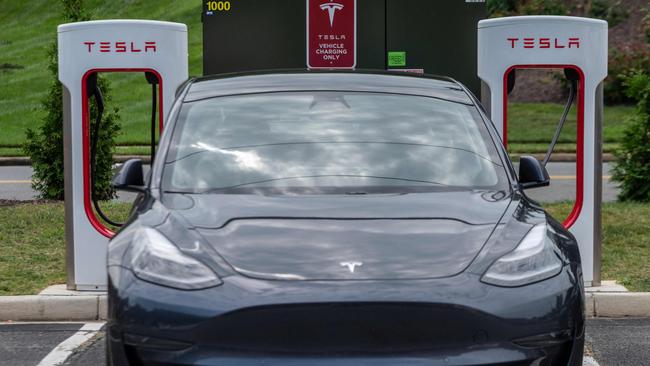We’re still mired in the slow lane on electric vehicle uptake

The government’s latest Future Fuels and Vehicles Strategy document talks up the recent “surge” in EV sales, yet in Australia they are still stalled at less than 2 per cent of all new-vehicle purchases. In Britain, the figure this year is 15 per cent, in China it’s nearly 11 per cent and in Norway – where the government has long offered incentives for people to buy zero-emission vehicles – it’s more than 70 per cent.
The boost to the Future Fuels Fund, from $71.9m to $250m, to help expand our charging infrastructure suggests a slight warming towards EVs, which can – when combined with solar panels – run on pure sunlight and produce less emissions than a single cow fart. But it’s interesting to put it in context next to the $490m that just one state – NSW – has pledged towards incentivising people to actually buy EVs, through rebates and stamp-duty waivers.
Scott Morrison seems to be attempting a tricky U-turn towards electric vehicles, but the fact is you’re still more likely to see him driving a French car while wearing a beret than at the wheel of a Tesla.
Bill Shorten, who recently chose a Tesla as his government vehicle, was crushed in 2019 by Morrison’s pithy put-downs about how EVs would end the Aussie weekend. Shorten’s bold goal was to have 50 per cent of all new cars sold in this country being electric by 2030, the exact pledge made by Joe Biden for the US earlier this year.
Charging infrastructure is vital – Germany, for example, has a plan to have one million public chargers available by 2030 – but on its own it is not enough to drive change.
There is no doubt a lot of Australians would like to buy an EV. When I tell strangers I write about cars, it’s the second thing they mention, after a desire to steal my job, but recent research by Resolve Strategic found price was the biggest factor in their hesitation to shell out for one.
There are 31 EV models on sale in Australia at present (some local distributors say they could offer more options but parent companies look at our sales figures and lack of incentives and laugh, bitterly) but only 14 of those cost less than $65,000.
What consumers want are electric vehicles they can afford, and in terms of financial incentives, the announcements provide roughly nothing.
The government’s strategy document mentions “some feedback called for the government to provide subsidies or tax concessions to reduce the current price gap between conventional and low emission vehicles” but said subsidies “would not represent value for the taxpayer”.
Mr Morrison says he “will not be forcing Australians out of the car they want to drive”, a slightly toned-down version of his 2019 position, but the fact is global markets are going to start foisting choices on us, and soon.
When it comes to actually making EVs cheaper, much like our 2050 targets we’re just going to wait for technology to magically solve that problem. Until then, Australians will stay in the slow lane of EV ownership.



Consumers hoping the federal government would accelerate our sluggish uptake of electric vehicles by supercharging the market with financial incentives or tax breaks will not be rushing to their nearest EV dealer today.